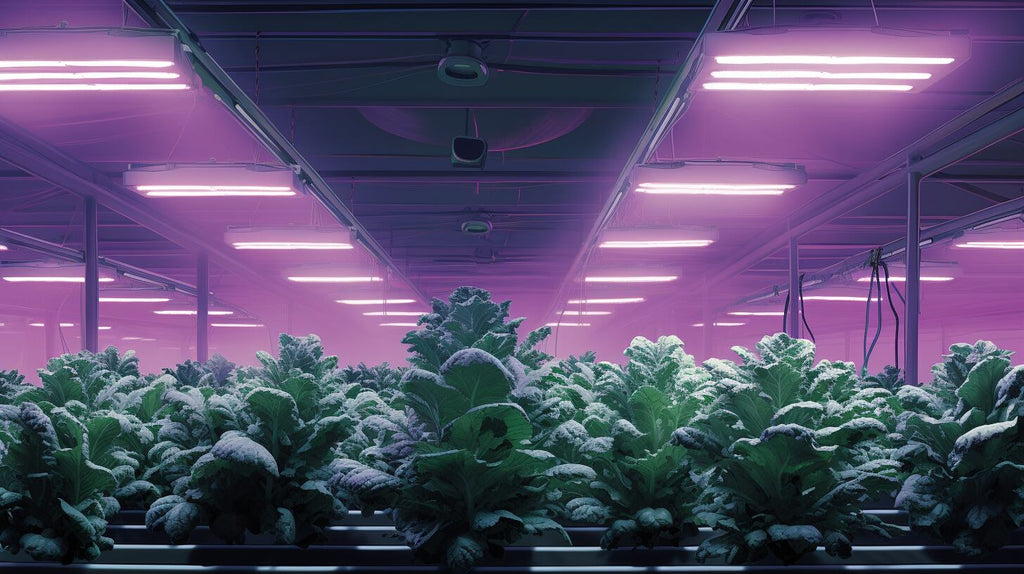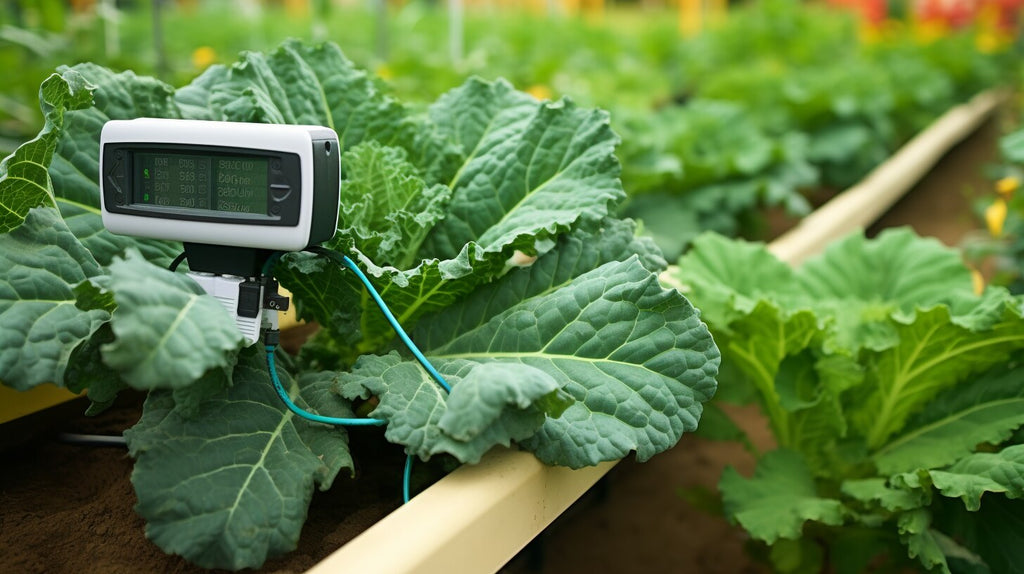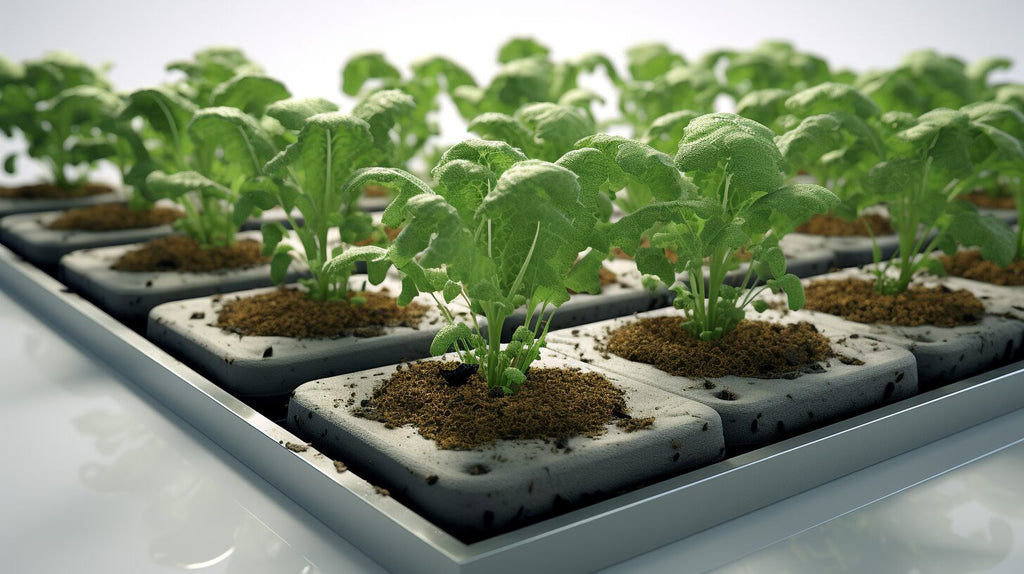How To Grow Hydroponic Kale
Kale, a powerhouse of essential vitamins and minerals, is known for its health benefits. You can grow kale hydroponically to enjoy it all year, no matter the weather.
Hydroponic kale grows faster, needs less space and maintenance than traditional soil-based gardening.
In this guide, we'll show you how to grow and take care of hydroponic kale at home. That way, you can have a fresh and sustainable supply.
Should You Learn How To Grow Kale Hydroponically?

Absolutely, learning how to grow kale hydroponically is a skill worth acquiring. Hydroponics is a good solution for farming when there isn't a lot of space and when the climate isn't ideal.
By using hydroponics in your garden, you can make your kale grow faster and help the environment too. Hydroponics uses less water and no soil. Additionally, you can easily grow kale inside your home. This makes it a great choice for city residents.
By putting in some setup work, you can have fresh, pesticide-free kale all year at home.
How To Grow Kale Hydroponically - Step By Step Guide
Let's dive into the step-by-step process of establishing a thriving hydroponic kale garden. Whether you are a seasoned gardener or a novice, you will find this guide easy to follow. From setting up your hydroponic system to harvesting, we've got you covered. Let's get started!
Start By Choosing The Best System For Growing Kale Hydroponically

In recent years, growing kale without soil has become more popular. This is because it has better flavor and nutrition compared to regular produce. Hydroponics systems don't use soil, but a nutrient-rich water solution. This helps plants grow faster, use less water, and have fewer pests or diseases. When choosing a system to grow kale hydroponically, you need to think about different things. These include the materials used, the amount of light, and how to manage nutrients.
A popular system for growing plants is called Deep Water Culture (DWC). In DWC, plants are suspended in net pots filled with clay pebbles or perlite. The roots of the plants are submerged in a nutrient-rich water solution in a reservoir below. To make sure roots have enough oxygen all day, use air stones or air pumps to keep oxygen flowing.
Another system is called Ebb & Flow, or flood and drain. It uses nutrient-rich water. You can supply the water by hand or use an automated timer. Every few hours, the excess water is flushed out of the root zone. The nutrients are evenly distributed in the root zone so kale plants can grow steadily.
Read More: How To Install A Water Chiller To A Hydroponics System
How Do You Start Hydroponic Kale?
Starting a hydroponic kale garden is an easy project that can give you delicious and nutritious results with minimal effort. The first step is to select the seeds for your garden. Kale lends itself well to hydroponics since you can grow it from seeds or by cloning an existing kale plant.
Starting from seed is usually the most convenient option. Remember, these seeds grow best at temperatures between 60-75 degrees Fahrenheit. Lower temperatures mean fewer seeds will sprout.
How Much Light Does Hydroponic Kale Need?

Hydroponic kale needs good lighting to grow well because it helps with photosynthesis. Kale generally needs about 6-8 hours of sunlight per day when grown outdoors.
When grown indoors using artificial lighting, the requirements may change slightly. LED grow lights are a good option for indoor hydroponics because they give off full spectrum light and use less energy. For optimal growth, position the lights about 10-12 inches above the plants and adjust as they grow.
To help plants grow well, it's important to give them periods of darkness, like night-time. Keep in mind that too much light can lead to leaf burn, while too little light can result in leggy plants.
Tips For Growing Hydroponic Kale Indoors

Growing hydroponic kale indoors can be fun and fulfilling, but it needs attention to detail. Here are a few tips to help you succeed:
-
Monitor Your Water pH: Ideal pH levels for hydroponic kale range from 5.5 to 6.5. Regularly checking and adjusting the pH of your water ensures optimal nutrient absorption.
-
Maintain Proper Air Circulation: Good air circulation prevents the build-up of mold and mildew, which can harm your plants. Incorporate a fan in your indoor garden setup to facilitate air movement.
-
Keep the Temperature Right: Hydroponic kale thrives at temperatures between 60-70 degrees Fahrenheit. Make sure to maintain this temperature range for the best results.
-
Regular Feeding: Feed your plants with a balanced hydroponic nutrient solution. Kale, being a leafy green, requires high amounts of nitrogen.
-
Pest Management: Even though growing hydroponically reduces the risk of pests, it's still crucial to regularly inspect your plants. Make use of organic pest control methods if the need arises.
Remember, patience is key when cultivating hydroponic kale. With careful monitoring and maintenance, you’ll be harvesting your own nutritious kale in no time.
Read More: Top 10 Common Mistakes Made in Hydroponics Garden
How To Harvest Your Hydroponic Kale
Harvesting hydroponic kale is a straightforward and rewarding process. It's best to start harvesting when the leaves are tender and have a more vibrant color, usually about 2-3 months after planting.
To harvest, simply cut the outer leaves while allowing the center of the plant to continue growing. This way, your hydroponic kale plant can provide a continuous harvest for several months. Be careful not to cut the stems too close to the plant base to avoid damaging the plant.
After harvesting, immediately rinse the leaves to remove any remaining nutrient solution, pat them dry, and store them in a cool place. Regular harvesting encourages plant growth, so don't hesitate to take what you need for your meals regularly. Remember, the fresher the leaves, the higher the nutritional content.
Read More: 7 Easy Steps To Start A Hydroponics System
How Long Does It Take To Grow Kale Hydroponically?

The time it takes to grow kale hydroponically can vary. It depends on factors like the system used, the conditions maintained, and the care given to the plants. A hydroponic system can make kale grow faster than traditional gardening in soil.
From the time of seeding, hydroponically grown kale is typically ready to start harvesting as baby greens in about 2-3 weeks. For a full and may vary based on the specific growing conditions. mature kale plant, it takes around 50-60 days.
Read More: The Top Tips for Outdoor Hydroponics Yields
What Are The Benefits Of Growing Kale Hydroponically?

| Higher Yield | Hydroponic kale grows faster and provides higher yields compared to traditional soil-based methods, ensuring an abundant supply. |
| Control Over Nutrients and pH | Hydroponics offer complete control over the nutrient solution and pH levels, which directly impacts the growth and nutritional value of the kale. |
| Reduced Pests and Diseases | Since the system is soilless, the risks associated with soil-borne diseases and pests are significantly mitigated. |
| Less Water Usage | Hydroponic systems use 90% less water than traditional farming, making it a more sustainable and environmentally friendly option. |
Read More: How To Use A Hydroponic Nutrients Chart
Frequently Asked Questions
How long does it take to grow kale hydroponically?
Hydroponic kale grows at different rates due to various factors. Typically, you can start harvesting baby greens after 2-3 weeks of planting. For a fully mature kale plant, it usually takes between 50-60 days. Note that these timelines are estimates and can be influenced by the specific system used growing conditions, and care provided to the plants.
Is kale easy to grow hydroponically?
Yes, kale is relatively easy to grow hydroponically, even for beginners. With its straightforward needs regarding light, pH, and essential nutrients, kale is a great choice for those new to hydroponic gardening.
Can I grow kale in water?
Absolutely, kale can be grown in water using a hydroponic system. Hydroponics is a way to grow plants without soil. Plants grow in nutrient-rich water, which helps them grow faster and produce more.
How long does it take for kale to fully grow?
A full-grown hydroponic kale plant typically takes between 50-60 days from the seeding stage. However, the exact timeframe can vary based on factors such as the specific system used, growing conditions, and the level of care provided. It's important to monitor the plant's progress regularly to ensure optimal growth.
Conclusion
To sum up, hydroponic gardening is better than regular gardening for growing kale. Not only does it accelerate growth and yield, but it also provides you with total control over the nutrients and pH levels the plants receive. Plus, it significantly reduces the risk of soil-borne diseases and pests.
Hydroponic gardening is also an eco-friendly choice, utilizing less water and space. Experienced or new gardeners can grow fresh, healthy kale at home all year long.
References
- University of Florida IFAS Extension: Hydroponic Vegetable Production ( Link )
- Cornell University, College of Agriculture and Life Sciences: Best Management Practices for Soilless Culture in Hydroponics ( Link )
Last Updated: 8 December 2023








